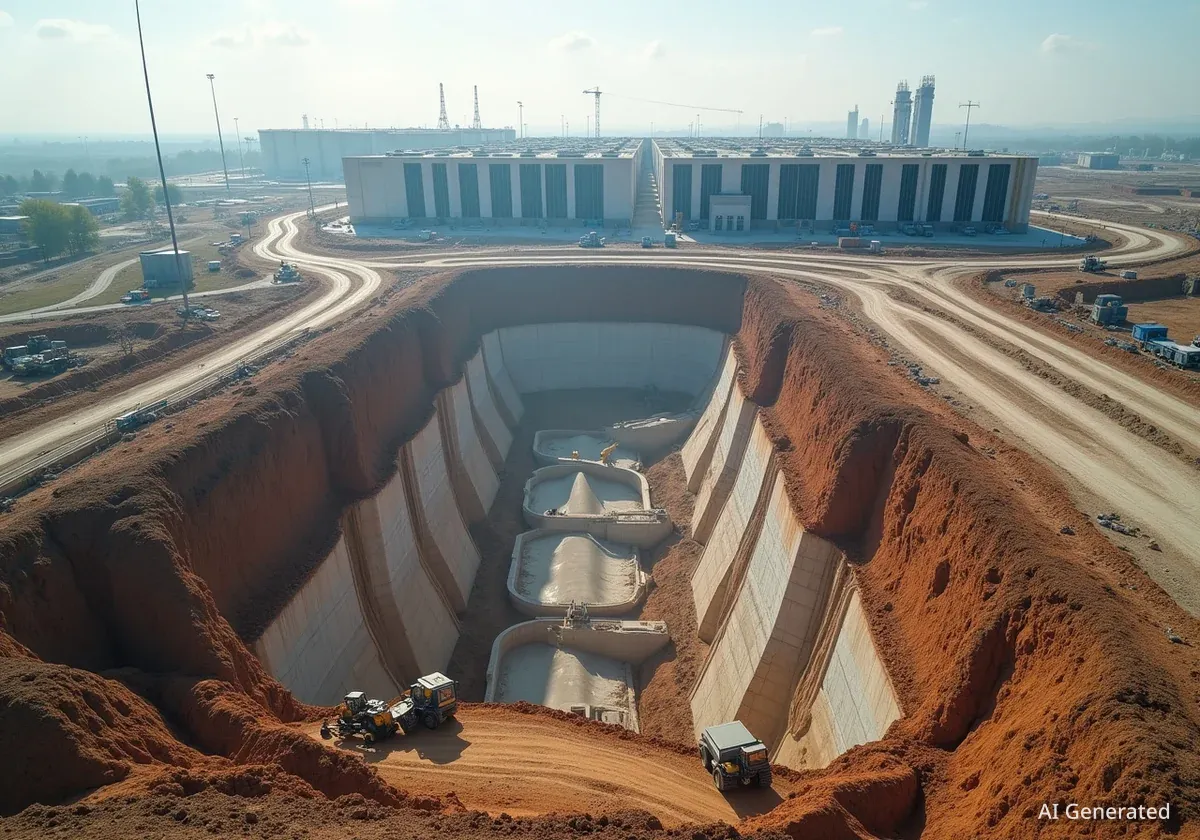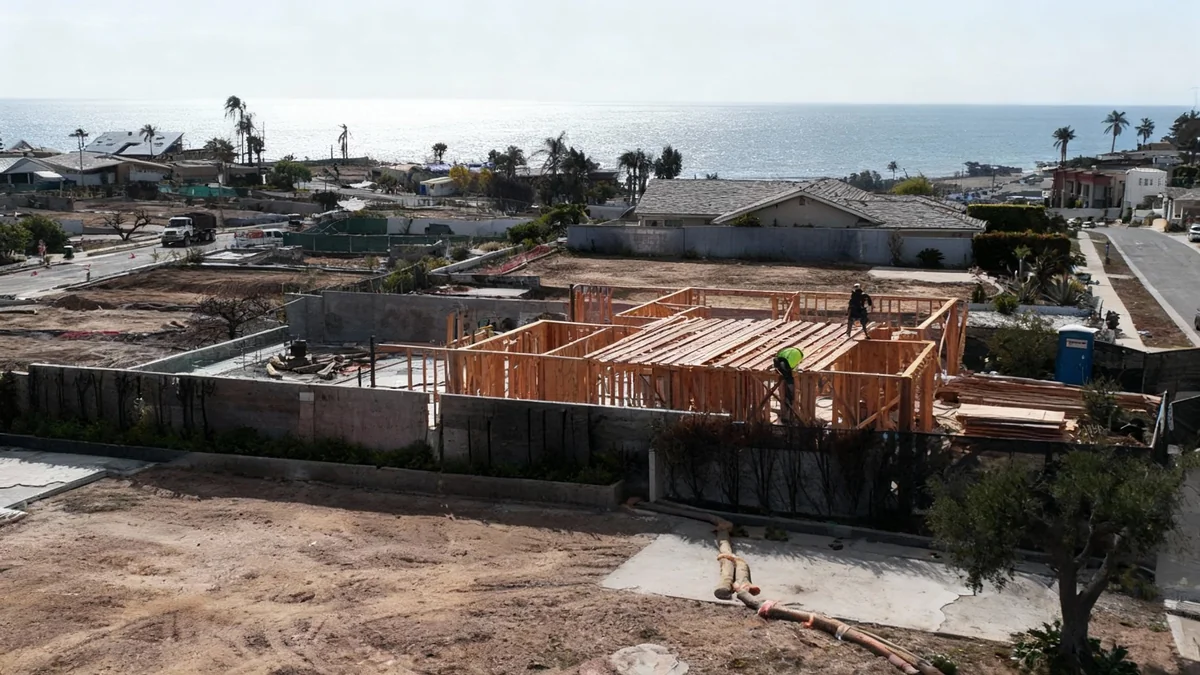The rapid expansion of artificial intelligence and the global demand for data are creating a new and valuable sector in commercial real estate known as "powered land." This emerging asset class focuses on properties that are prepared with the necessary electrical infrastructure and permits to support large-scale data centers, shifting the industry's focus from construction to energy acquisition.
Major real estate and private equity firms are now investing hundreds of millions of dollars to secure land with guaranteed access to massive amounts of power. This strategy addresses the primary bottleneck for modern data center development, which is no longer building physical structures but ensuring a reliable and sufficient energy supply.
Key Takeaways
- "Powered land" refers to properties secured with permits, utility commitments, and infrastructure to deliver large-scale power for data centers.
- An estimated 40,000 additional acres of powered land are needed globally over the next five years to support projected data center growth.
- Securing power has become more critical and valuable than the physical construction of data center buildings.
- Major investment firms like Hines and Silver Lake are launching dedicated platforms to acquire and develop these energy-ready sites.
The Shift from Square Footage to Megawatts
The fundamental challenge in the data center industry has changed. In the past, developers focused on constructing buildings. Today, the primary obstacle is accessing the enormous amount of electricity required to run modern computing infrastructure, especially for AI applications.
"The challenge isn’t building walls anymore. It’s getting megawatts to the site," said David Steinbach, Global Chief Investment Officer at Hines, a global real estate investment manager. This shift has led firms like Hines, with over two decades of experience in data center development, to create new business models centered on energy.
Hines has recently pivoted to securing power and entitlements for hyperscale sites before any construction begins. This process involves mapping electrical grids, negotiating with landowners, and providing financial guarantees to utility operators to secure power commitments.
"Hines is focused on this front-end work, making land AI-ready before the buildings even rise," Steinbach explained.
A Growing Demand
According to research from Hines, approximately 20,000 acres of powered land are currently in use by operational data centers worldwide. To meet demand over the next five years, an additional 40,000 acres will be required. This is an area roughly equivalent to three times the size of Manhattan.
Powered Land as an Investable Asset
The scarcity and value of energy rights have turned powered land into a distinct, tradable asset class. Once a developer secures the necessary grid connections and permits for a piece of land, they have created a valuable asset that is in high demand from data center operators and hyperscale tech companies.
Steinbach noted that powered land is now an investable asset on its own. He believes that the most strategic investments are no longer in physical space but in the infrastructure that enables computation. "The smartest capital today isn’t chasing square footage — it’s enabling computation," he stated.
This trend is attracting major players from both technology and finance. The competition for these sites is increasingly led by tech companies and energy producers, not just traditional real estate developers.
Major Investment Initiatives
In a significant move, private equity firm Silver Lake and infrastructure investor Commonwealth Asset Management launched a dedicated powered land platform. The venture will deploy $400 million in capital to build a global portfolio of energy-ready sites for data center development. The platform is targeting high-growth markets in the U.S., Canada, and the U.K. where power access is limited.
Lee Wittlinger, a Managing Director at Silver Lake, described the investment as a long-term commitment to meet the needs of AI-driven growth. "Our innovative approach to land and power solutions, combined with strategic relationships with key energy partners, will enable us to meet the evolving demands of hyperscalers with a holistic, differentiated approach," Wittlinger said in a release.
Expanding Geographic Horizons
The search for sufficient power is forcing data center development to expand beyond traditional hubs. Northern Virginia, one of the world's largest data center markets, is now facing power constraints, pushing development into new regions.
Areas rich in power, such as the American Midwest and Texas, are becoming increasingly attractive locations. These regions often have more robust energy grids and greater potential for new power generation, making them ideal for future data center expansion.
Global Opportunities
The demand for powered land is a global phenomenon. The Hines research paper highlights significant opportunities in several international markets:
- Europe: The continent is currently experiencing an undersupply of data center capacity alongside growing demand, creating strong potential for developers and investors.
- The Middle East: This region is identified as an emerging market with significant potential. Governments are investing heavily in AI, renewable energy, and grid infrastructure, creating a favorable environment for data center development.
Challenges and the Future of Real Estate
Despite the strong demand, developing powered land is not without its difficulties. The process involves several complex steps that require specialized expertise. Developers must navigate securing suitable land, managing lengthy entitlement processes with local governments, and negotiating complex agreements with utility providers to obtain sufficient power commitments.
These challenges, however, also create the value in this new asset class. Companies that can successfully manage these hurdles can deliver a highly sought-after product to the market.
The rise of powered land signals a fundamental change in the real estate industry. It shows how the needs of the digital economy are physically reshaping the landscape and creating new investment frontiers.
"This isn’t just a tech story," Steinbach concluded. "It’s a building cycle story reshaping how and where the real estate business develops for decades to come."





